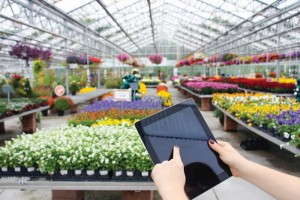How To Get The Digital Generation Into The Garden: Garden Media’s Guide To Marketing To Millennials
 Millennials, the digitally obsessed, socially charged generation that loves to indulge in selfies and Instagram filters, are emerging in the world of gardening, too.
Millennials, the digitally obsessed, socially charged generation that loves to indulge in selfies and Instagram filters, are emerging in the world of gardening, too.
Yes, you heard correctly. Millennials want to go green. And, it’s your business’ job to make gardening interesting, easy and rewarding enough for them to eagerly leap into the unknown world of plants and get dirty.
Believe us. The millennial generation, those born after 1980 and ranging in age from 14 to 33, is certainly worth investing in. Already, this generation is bigger in numbers than Baby Boomers, making up an estimated 25 percent of the U.S. population.
Plus, millennials have immense buying power, collectively spending more than $200 billion annually. They indirectly influence more than $500 billion in purchases by their parents, friends, relatives and co-workers.
How? This generation is constantly plugged in, racking up to 18 hours of media time a day, simultaneously juggling multiple digital activities.
Millennials regularly engage with content in new ways, creating more touch points than ever before for garden businesses to reach them.
Reach this powerful generation by determining what about gardening interests them, what they want from your brand and what marketing tactics work best.
Interests In The Garden Realm
Gardening is incredibly popular with millennials in the UK and Europe right now. In the past year, British homeowners aged 25 to 34 spent more than $1,200 on their lawns, gardens and outdoor spaces, more than double the average spend of nearly $600. That’s almost three times the average spent by households in the U.S. on gardening.
Why? Millennials want to live the good life — from baking and cooking to gardening and making beer. This generation is into growing their own food, grilling, growing herbs and creating trendy outdoor spaces to entertain.
But, according to Today’s Garden Center’s 10 Percent Project, the problem with U.S. millennials is they don’t see themselves as gardeners — even if they grow herbs, have vegetable gardens or even maintain a few containers — because they’re too young, busy and cash strapped.
When they do spend money on gardening, this generation is growing edibles, plants they see as doing double-duty. And they’ll spend money to decorate the deck or patio with colorful flowers when entertaining friends or for special occasions.
Additionally, millennials want to make the world a better place and contribute to the greater good. Some 29 percent see themselves as good stewards of the earth, embracing a connection with plants based on economics, environmental impact, health and wellness. Millennials gravitate toward plants that benefit personal sustainability like herbs, vegetables and fruits. Native plants are also a big win since they keep it local, attract birds and bees and restore biodiversity.
Millennials also want to garden anywhere, no matter how small the space or how long they’ll be there. Dwarf size plants like Brazelberries and lightweight containers similar to those from NativeCast and pop-up raised beds are hits because of their adaptability.
Tech-Savvy Gardening Is In
Different from past generations, millennials don’t want the garden to be a tech-free zone. These digital natives want growing systems that make it easy, either with an app, technology add-on or a no-fail system.
Then, millennials invite friends to join them socially by posting pictures of their successes and sharing memories made in the garden. Plus, they text or snap pictures of plants or garden projects before they make a purchasing decision to get feedback from their digital community. In fact, six out of 10 millennials depend on user-generated product reviews when shopping.
What Millennials Want From Garden Brands
This is a generation of digital natives who grew up in a world of internet, word processors and mobile phones. From Instagram and Pinterest to Facebook, it’s important to have a presence on social platforms — especially since their first step in the buying process is discussing potential purchases with friends and digital fans on social networks. Millennials seek pre-purchase validation online to avoid buyer’s remorse by pursuing a second, third or 1,000th opinion to help them make a buying decision.
With their larger network of social friends and followers, they have a large — 696 Facebook friends versus the average 140 — captive audience to share their opinions with, which can heavily influence sales and brand perception.
One way to keep millennials happy, and to keep their social sharing positively skewed toward your brand, is to give them a voice in your brand. The passive consumer is a thing of the past as millennials want — and expect — to be partners in garden brands.
Give millennials a chance to collaborate with your brand, an outlet to voice their opinions and let them know their opinions are heard by acting on them.
This social sharing obsession gives brands a captive, digital audience to tap in to, examine consumer insights and authentically engage with creative consumers.
It’s a symbiotic relationship: the more power you give millennials to offer brand feedback, the more they’ll value you over competitors and generate positive, digital buzz around your company.








